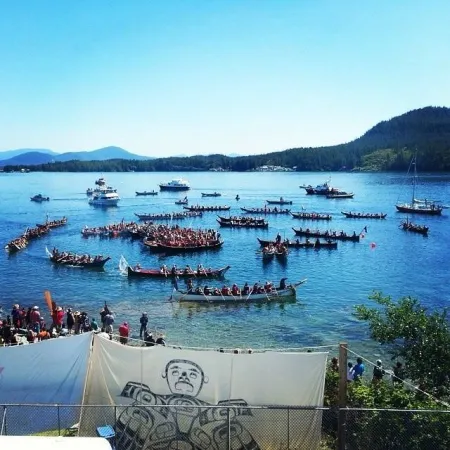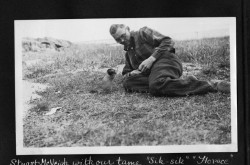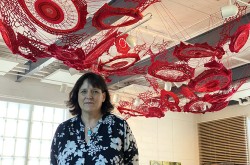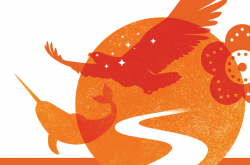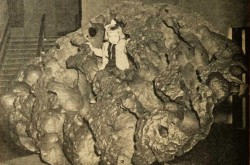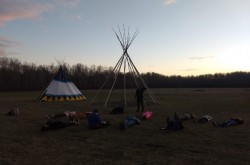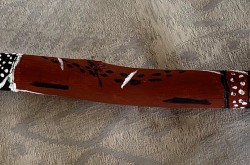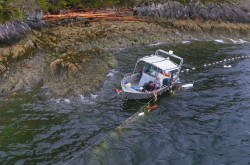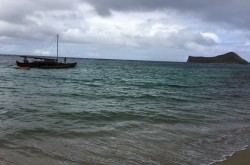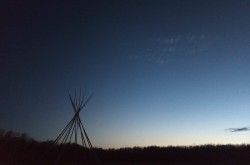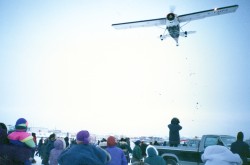An Indigenous canoe video series marks a new wave of cultural revitalization
Through a new online video series, Frank Brown is highlighting how Indigenous youth are reconnecting with the traditional, ocean-going canoe. Brown is the executive producer of Glwa – the ocean-going canoe, a series of 13 short videos that showcase the widespread impact of the canoe and the revival of its practice with maritime Indigenous culture today.
“The Heiltsuk have always been cultural innovators,” says Brown, a member of the Heiltsuk Nation in the community of Bella Bella on the central coast region of British Columbia. Bringing their story of cultural resurgence to the digital space is just one example of Heiltsuk ingenuity. Growing up, Brown says he didn’t experience the same connection to the Glwa as youth in the coastal Indigenous community today - a connection that he has had a hand in bringing back The Heiltsuk Nation have ushered in a wave of cultural revitalization through their outreach and travel with the Glwa, and a large part of that is due to Brown’s personal efforts.

Participants taking part in a canoe journey in 2016
When Brown was a college student in the 80s, Vancouver was hosting Expo ’86 – with a theme of transportation and communication. Noting the absence of representation for Indigenous modes of transportation, this territory’s first transportation technology, Brown created a plan to bring the Glwa to the national stage. In collaboration with other members of the community and surrounding area, they carved a Glwa and rowed it hundreds of kilometres from Bella Bella to Vancouver.
"The canoe is an important teacher in the revitalization of our ancestral teachings. Our people would go out to harvest food, say prayers, fast, prepare themselves physically and mentally to take on demanding physical work,” says Brown. “It’s going back to those teachings that instil empowerment, resolve, and ultimately a commitment."
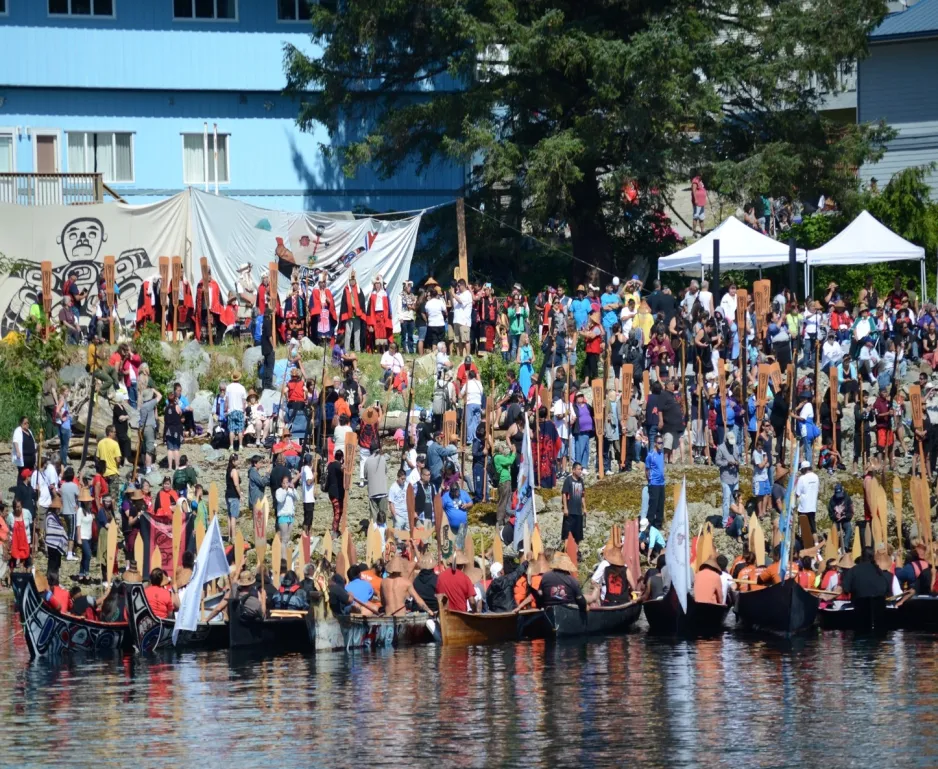
Glwas land on a beach during Qatuwas 2014
In 1989 – on the heels of the successful canoe journey to Vancouver – Brown and other community members paddled to Seattle to celebrate the 100th anniversary of the State of Washington with Native American tribes. The experience made an impression on the Heiltsuk travellers, and they decided to share that feeling with others.
The same year, Brown issued a challenge to other Pacific coast Indigenous peoples to canoe over and gather together in Bella Bella. Then in 1993, 23 canoes gathered in Bella Bella for the Qatuwas “people gathering together” festival, which is a gathering of people to commemorate and celebrate common maritime heritage and history.
In 2014, there was another Qatuwas celebration in Bella Bella – this time with double the number of canoes in attendance. The combined impact of Expo ’86, the 1989 trip to Seattle, and the 1993 Qatuwas set an incredible precedent for the tribal canoe journeys to come.
Prior to these journeys, the Glwa had almost disappeared from the communities from which it originated. Overshadowed and replaced by motorized modes of transportation, the Glwa was suppressed by decades of dismissal of Indigenous cultures and assimilatory government policies. However, the revival of the Glwa – a vessel that embodies and thrives on teamwork and community – also meant that a revival between individuals and their traditions would surely follow.
For Bella Bella, the impact of the Canoe journeys has far surpassed what was ever imagined from the first expedition in 1986. The reconnection to culture goes in hand with growth in the relationships between individuals.
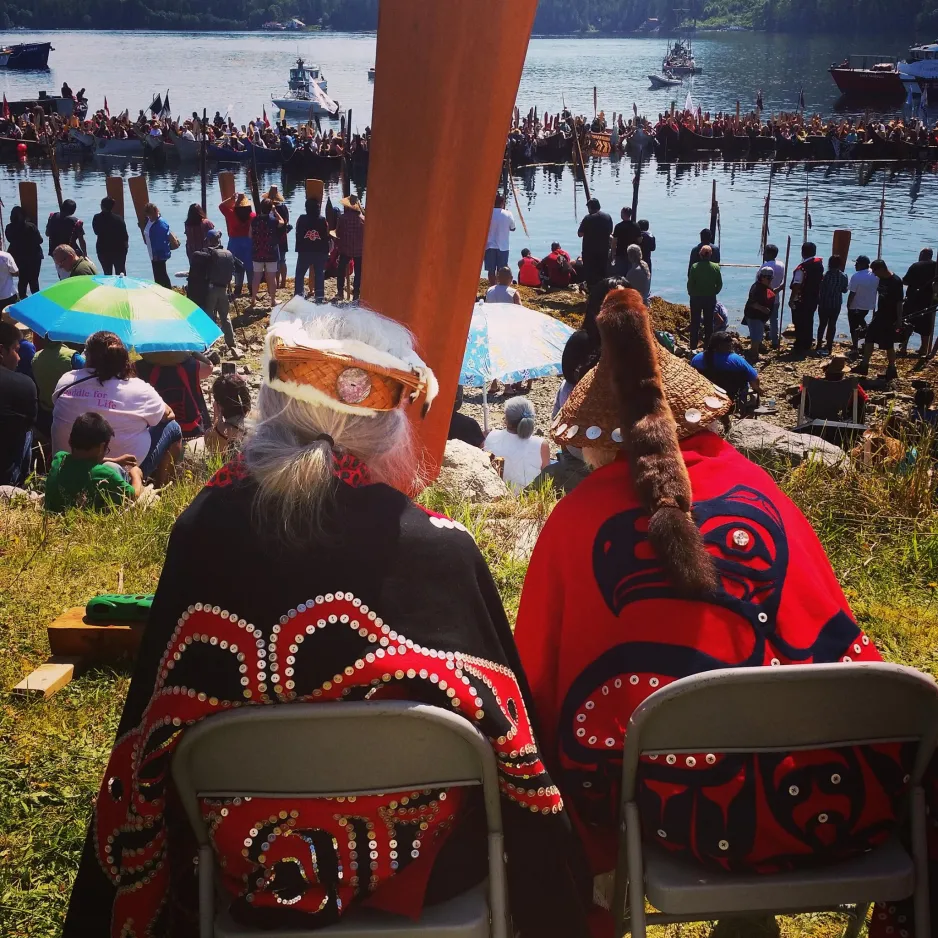
Community elders Robert and Shirley Hall watch the arrival of canoes during the 2014 Qatuwas
“The most impactful experiences I’ve had working with the canoe journeys has been seeing young people becoming empowered through the reconnection to their history, culture, language, and through inter-generational knowledge transfer with our elders and knowledge keepers,” says Brown. Inter-generational knowledge transfer is a central aspect of the success of the canoe journeys, and is certainly a key element of cultural revitalization. The sharing of traditional knowledge has allowed relationships between people – and each individual’s relationship with their culture – to deepen. Indigenous people are able to go on canoe journeys today, and those experiences continue to have an impact on participants long after they’re over.
As Brown explains, the spiritual impact of the journeys “supports the quality of life of the participants even after they’ve completed their journeys - to teach them that they can continue to achieve their destination, their goals, if they continue to move forward one stroke at a time in a positive way.”
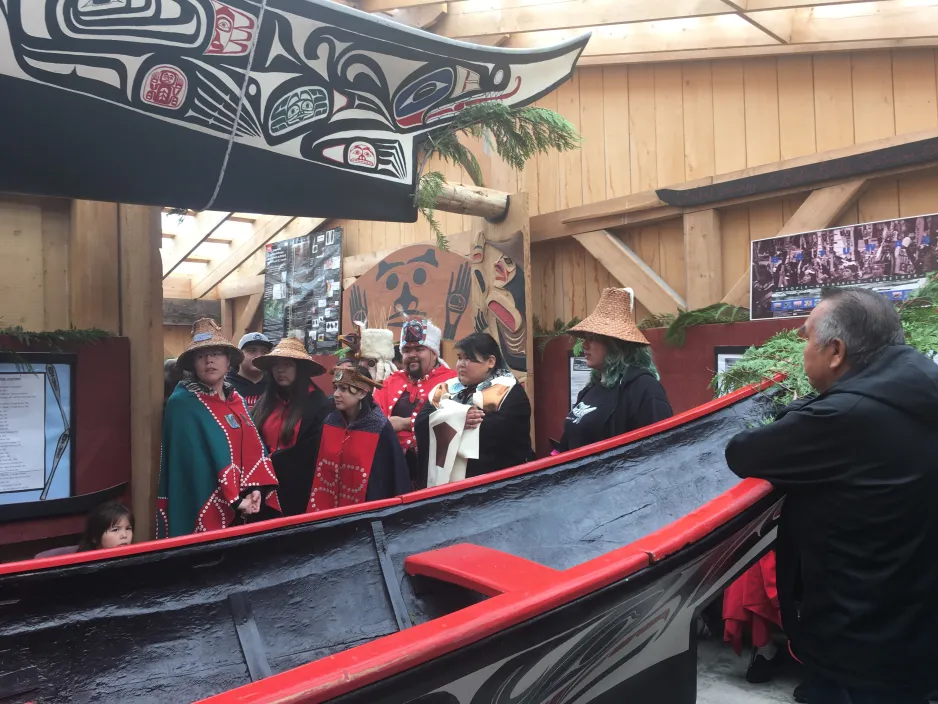
A peek inside the Sacred Journey exhibit
The story of the canoe journeys is being brought to new audiences through the video series, Glwa – the ocean-going canoe, which was a collaborative effort between the Heiltsuk Tribal Council, Fisheries and Oceans Canada, and Ingenium – Canada’s Museums of Science and Innovation. The video series is the second in a series of Sacred Journey projects, following the release of Glwa – The Documentary last year, which was produced in partnership with the University of Winnipeg. Both projects will contribute to the Sacred Journey travelling exhibition, currently in development in partnership with Ingenium, sharing stories about the resurgence of the ocean-going canoe.
“It’s been very interesting, insightful, and informative to take our ancestral teachings and stories to create a fusion of cutting edge technology, and story-telling,” says Brown, "and make them relevant not only to the Indigenous community but also to share really critical and proven teachings that will inform society’s thinking about the issue of sustainability.”
The videos bring Heiltsuk culture and history to the forefront of discussions on innovation and technology, and rightfully so. The story of the Glwa emphasizes the deeply important contributions of Indigenous peoples to our country as we know it today.



